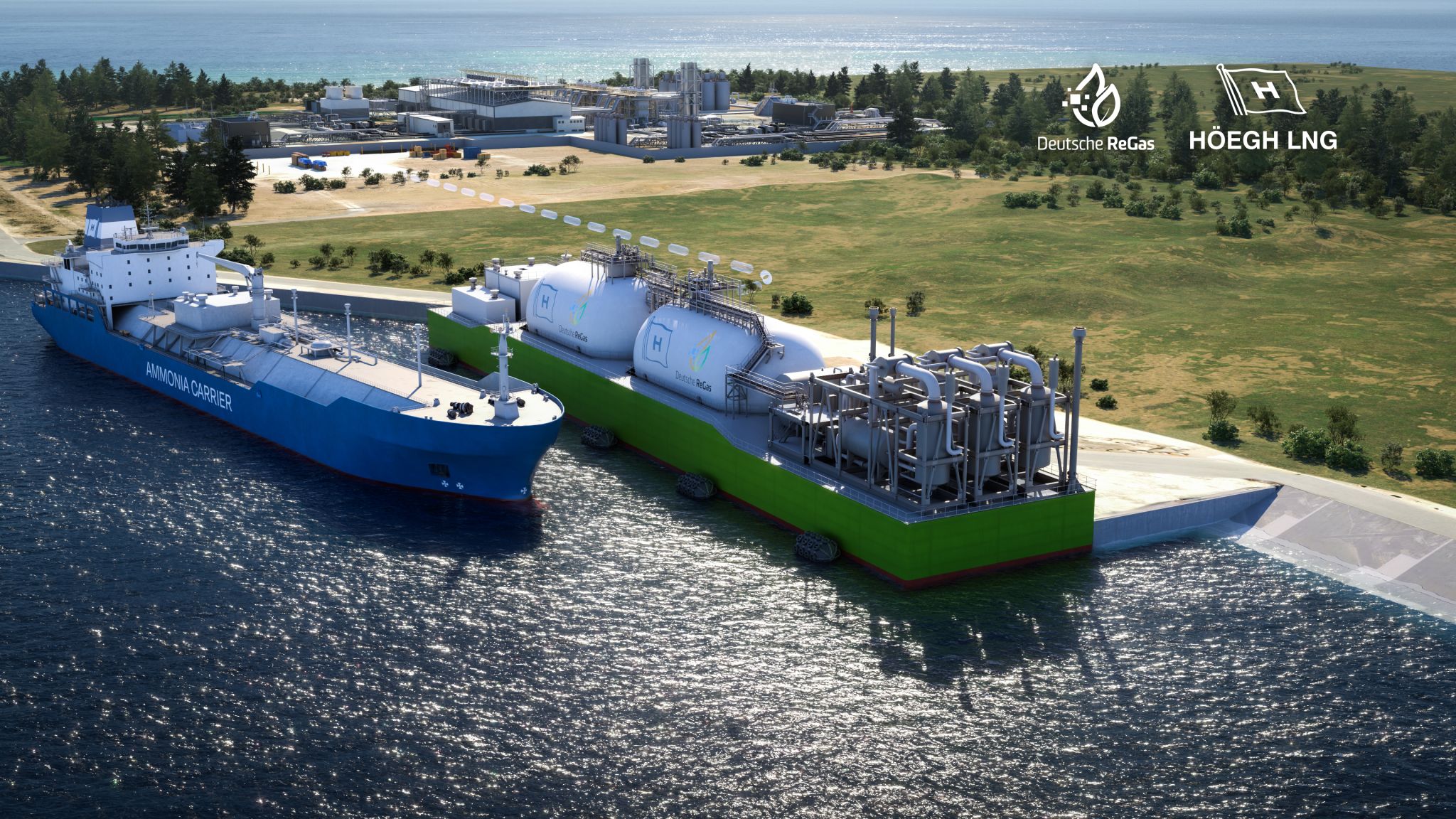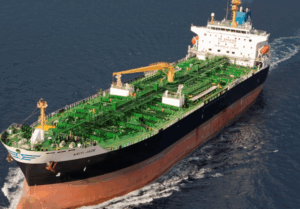German-based Deutsche ReGas, a company engaged in the European energy infrastructure sector and operator of the only privately financed LNG-terminals in Lubmin and Mukran in Germany, and Bermuda based Höegh-LNG, a global provider of maritime energy supply infrastructure, signed an agreement in principle to realize the “H2-Import-Terminal Lubmin”.
The new terminal will be the world’s first floating import terminal for the industrial-scale conversion of green ammonia to green hydrogen.
The terminal is planned to be in operation from early 2026, and will be the world’s first floating green ammonia cracker, producing around 30,000 tons of hydrogen per year that will be fed into the hydrogen core network via the existing feed-in point at the Deutsche ReGas Terminal in the port of Lubmin.
The green ammonia cracker technology embedded into the barge solution has been developed by Höegh LNG and serves as an industrial pilot for the conversion and decarbonization of FSRU’s in Germany.
Deutsche ReGas will provide the on-shore terminal infrastructure, the overall coordination of the entire project, including permitting and the marketing of the import capacities at the terminal.
“Our H2-Import-Terminal Lubmin is a key building block for decarbonization of the industrial regions of eastern and southern Germany. The H2-Import-Terminal Lubmin strengthens Mecklenburg-Western Pomerania’s position as a green energy powerhouse,” said Ingo Wagner, managing director of Deutsche ReGas.
“Importing hydrogen from global producers overseas is key to achieving industrial decarbonization. By adapting existing marine infrastructure elements with our innovative cracking solution, we can provide access to cost-competitive hydrogen within the next few years,” noted Erik Nyheim, chief executive in Höegh LNG.



